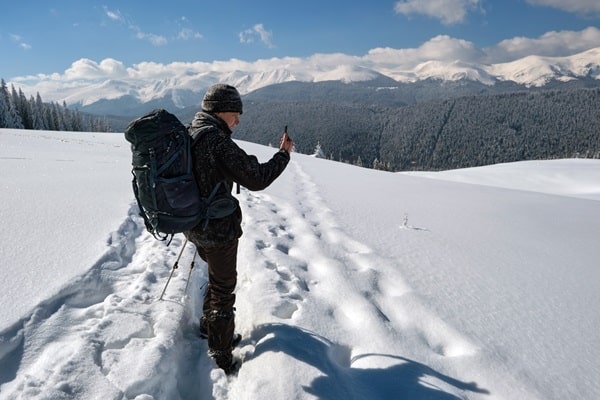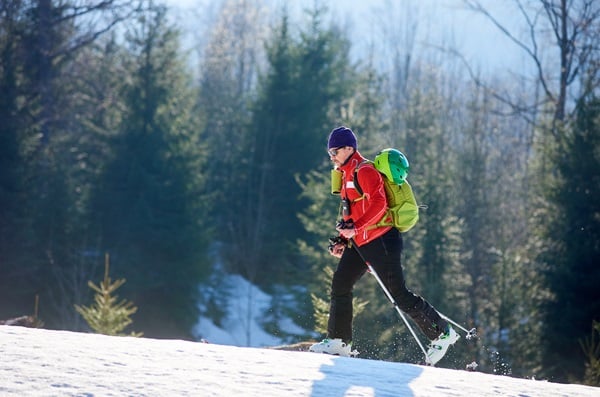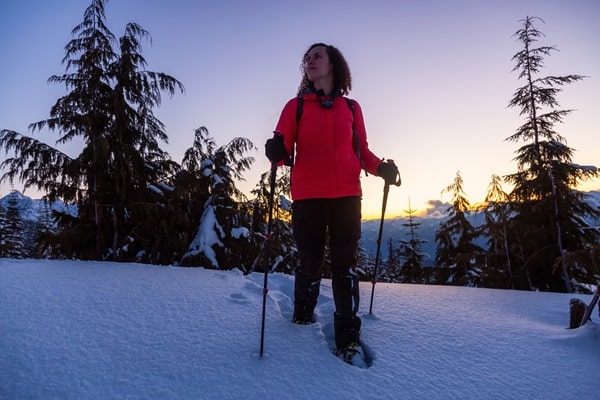Snowshoeing stands out as a winter sport that combines accessibility, adventure, and the joy of exploring snow-covered landscapes. Unlike skiing or snowboarding, snowshoeing doesn’t require steep slopes or expensive equipment, making it an ideal choice for winter enthusiasts of all ages. This article aims to guide first-time snowshoers through the essentials of the sport—from selecting the right gear to navigating trails with confidence. As we delve into the world of snowshoeing, readers will discover practical tips for planning their first trip, mastering basic techniques, and even joining the vibrant community of fellow snowshoers.
Contents
Choosing the Right Gear

The foundation of a successful snowshoeing adventure lies in selecting the right gear. Beginners should focus on finding snowshoes that match their intended activities, whether exploring flat woodland trails or tackling more challenging mountain terrains. Look for snowshoes with adequate flotation and traction to handle the specific snow conditions you’ll encounter. In addition to snowshoes, wearing appropriate clothing is crucial. Layers are your best friend in the cold, allowing you to adjust your temperature as you move. Waterproof outerwear, insulated boots designed for snowshoeing, moisture-wicking base layers, and protective accessories like gloves and hats will keep you comfortable and safe from the elements.
Planning Your First Trip

Choosing the right destination for your first snowshoeing trip is essential for a positive experience. Start with well-marked, beginner-friendly trails that offer a balance of beautiful scenery and manageable terrain. Research local parks, nature reserves, or snowshoeing centers that provide marked trails suitable for beginners. Safety should be your top priority, so always check the weather forecast and avalanche warnings (if applicable) before heading out. It’s also wise to inform someone of your plans and expected return time. As you gain confidence and experience, you can gradually venture into more challenging adventures.
Basic Techniques and Tips

Mastering the basic techniques of snowshoeing will enhance your enjoyment and safety on the trails. Walking in snowshoes involves a slightly wider stance to accommodate the size of the snowshoes, and it’s important to lift your feet a bit higher than normal to avoid tripping. Learning how to use your poles for balance and support will also improve your efficiency. When it comes to ascending and descending slopes, leaning forward slightly while going uphill, bending your knees, and leaning back when going downhill can help maintain stability. Practice these techniques in a safe, flat area before tackling more varied terrain.

Navigating snow-covered trails requires a basic understanding of trail signs and the ability to read a map. Familiarize yourself with the local trail marking system, and always carry a map of the area. Staying on marked trails not only ensures your safety but also protects the surrounding environment. Snowshoeing etiquette is equally important, particularly on shared trails. Yield to faster or uphill travelers, and avoid walking on cross-country ski tracks. By respecting nature and fellow outdoor enthusiasts, you contribute to a positive and enjoyable experience for everyone.
Building Endurance and Technique

For beginners, starting with shorter, less challenging trails is key to building both endurance and confidence. Snowshoeing can be physically demanding, especially in deep snow, so gradually increasing the distance and difficulty of your outings will help improve your stamina and skill over time. Pay attention to your body’s signals and rest when necessary to prevent overexertion. As you become more comfortable on your snowshoes, experiment with different terrains and conditions to refine your technique and challenge yourself.
Joining a Snowshoeing Community

Connecting with a snowshoeing community can significantly enhance your experience. Many areas have clubs or groups that organize outings, offering a great opportunity to learn from more experienced snowshoers and meet people with similar interests. Participating in guided tours or events can also provide valuable insights into advanced techniques, safety, and local ecology. Furthermore, being part of a community can offer motivation to explore new trails and share memorable snowshoeing adventures.
Exploring Advanced Snowshoeing

As your skills and confidence grow, you might be drawn to the challenges of advanced snowshoeing, such as backcountry explorations and steeper terrains. This level of snowshoeing requires not only a higher degree of physical fitness but also knowledge of navigation in remote areas, avalanche safety, and the ability to handle sudden changes in weather. Advanced snowshoers often invest in more specialized equipment, including snowshoes with enhanced traction and bindings, as well as safety gear like avalanche transceivers, probes, and shovels. Seeking out additional training or courses on winter wilderness survival and avalanche safety is highly recommended before venturing into backcountry snowshoeing. This not only prepares you for the challenges but also ensures that your adventures in untouched snow are both safe and enjoyable.
Preparing for the Unexpected

Snowshoeing, like any outdoor activity, comes with its share of unpredictability. Preparing for the unexpected is crucial for any snowshoer, especially beginners. Always pack essential safety gear, including a first aid kit, navigation tools, extra food and water, and a means of communication. Familiarize yourself with basic first aid and survival techniques. Learning how to build an emergency shelter, signaling for help, and staying warm in cold conditions can make a significant difference in an unexpected situation. Remember, the goal is not only to enjoy the beauty of winter landscapes but to return home safely.
Embracing the Winter Wonderland

Beyond the physical activity and technical skills, snowshoeing opens up a world of breathtaking winter beauty often unseen by others. Taking the time to appreciate the quiet solitude of snow-covered forests, frozen lakes, and mountain vistas can provide a profound sense of peace and connection with nature. Capture these moments with photographs, keep a journal of your snowshoeing adventures, or simply take a moment to breathe in the crisp winter air. This appreciation for the natural world is what often turns first-time snowshoers into lifelong enthusiasts.
The Bottom Line
Snowshoeing offers a unique blend of adventure, fitness, and the opportunity to explore the serene beauty of winter landscapes. For first-time snowshoers, the journey begins with choosing the right gear, learning basic techniques, and gradually building confidence on the trails. By preparing for each outing, respecting the natural environment, and embracing the challenges and joys of snowshoeing, beginners can embark on a rewarding journey through the winter wilderness. As you step into the world of snowshoeing, remember that each trail offers a new adventure, each snowfall a fresh canvas, and every outing the chance to create lasting memories. Let the journey begin.